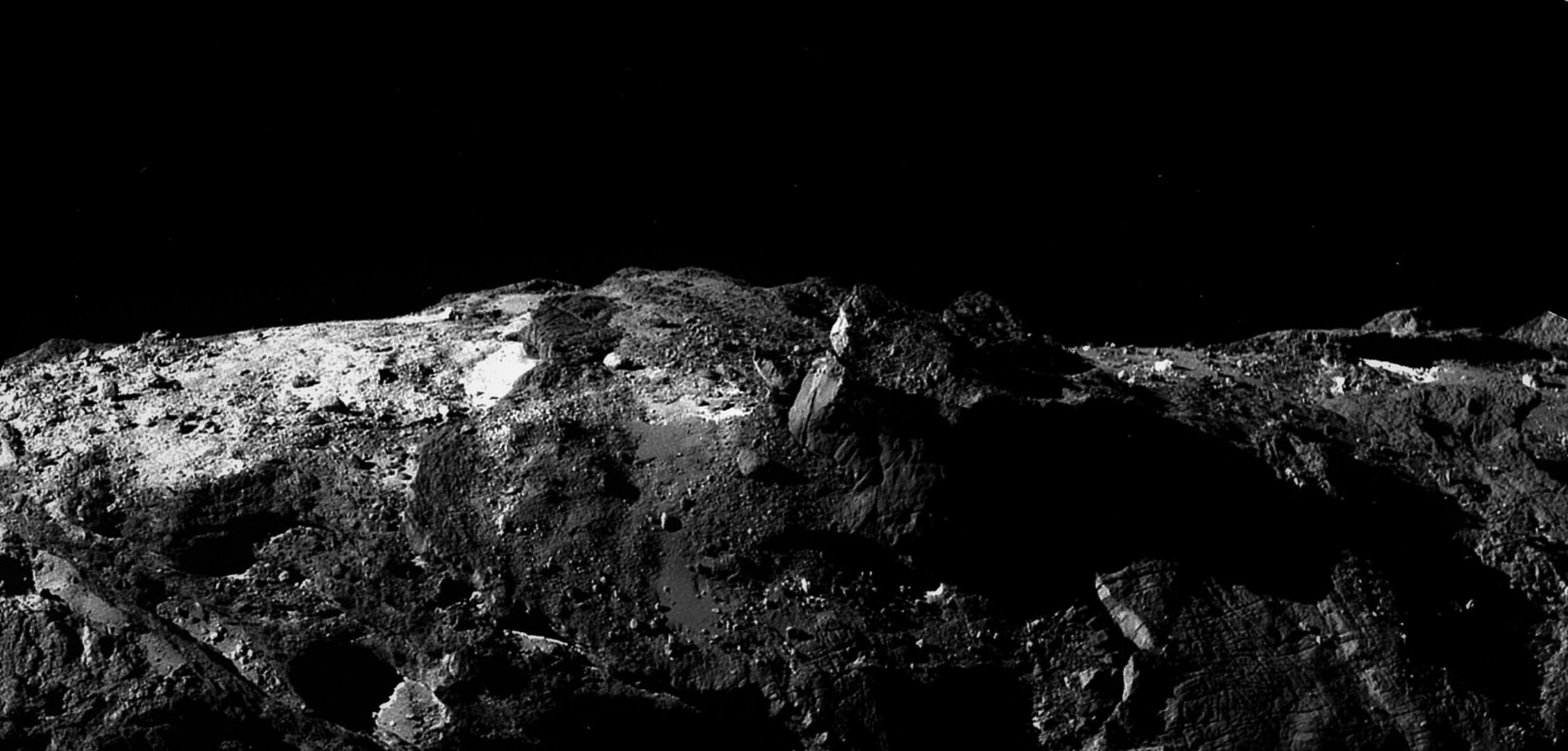Comet horizon
On 6 August of 2014, after a decade of travelling through interplanetary space, ESA’s Rosetta spacecraft arrived at its final target: Comet 67P/Churyumov-Gerasimenko (67P/C-G). The mission was the first to successfully land on a comet when it sent the lander Philae down to the surface a few months later, while the orbiter studied 67P/C-G in detail before the mission’s end on 30 September 2016.
Over its lifetime Rosetta extensively mapped the comet’s surface, which has since been divided into 26 geological regions named after Ancient Egyptian deities. The entire comet has been likened to a duck in shape, with a small ‘head’ attached to a larger ‘body’.
This image shows a section of 67P/C-G as viewed by Rosetta’s high-resolution camera OSIRIS on 10 February 2016. Amateur astronomer Stuart Atkinson, from the UK, selected and processed this view from the OSIRIS image archive. It is a crop of a larger image that shows a slightly wider view of the comet’s ‘Bes’ region on body of the comet, which takes its name from the protective deity of households, children and mothers.
It shows the uneven, shadowed surface of the comet in detail; particularly prominent just to the right of centre is an upright feature surrounded by scattered depressions, rocky outcrops and debris.
Explore the full mission image archive yourself here and let us know what hidden treasures you find via @esascience.


